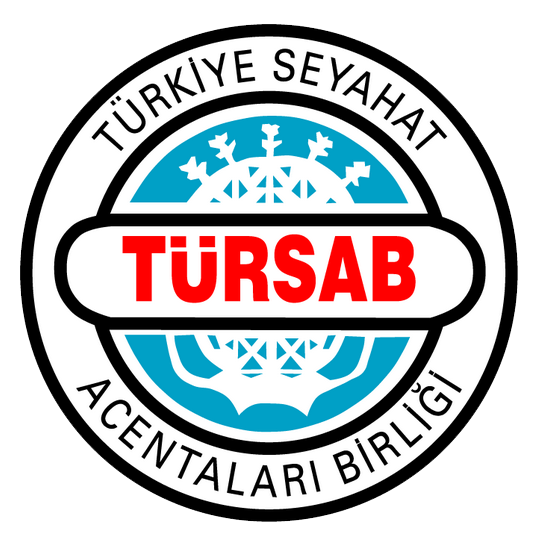 It is a surgical branch of science which deals principally with musculoskeletal system and its problems, and a specialist branch of medicine directed at examining, preventing and treating the morphology and function of the motion system of the body and the congenital lesions, and those ensuing or which have been formed as a result of trauma. Together with technological advances in the field of medical science, the use of orthopaedic joint prosthesis has continued to increase for the last 20 years, both in Turkey, and in the rest of the world. He hip and knee prostheses which are the most used present quite successful results. Patients whose aches and pains cannot be controlled, whose daily living activities such as walking and climbing stairs have become highly restricted, and who have a high degree of damage in their joint cartilage, despite methods of treatment such as rest, medication, physical therapy methods, the use of walking sticks, and injections into the joint having been applied, are offered complete joint prosthesis. The loss of cartilage within the joint causes the surfaces of the joints to become eroded. This causes pain and leads to a loss of mobility. Indeed, the patient has difficulty in walking and carrying out his or her other daily activities. Joint prosthesis surgery is an intervention aimed at resolving complaints such as pain and the limitation of mobility due to the calcification of the joints (arthritis) and the deterioration on the surfaces of knee and hip joints, and at regaining the mobility of joints which have become eroded and incapacitated, and enabling them to function without pain. As the ability to walk and function is regained as a result of joint prosthesis, the vitality and quality of life of the patient improves also. Parallel to the increase in the duration of life and the rise in the old age population, the number of patients who have total knee and hip prosthesis operations is rising every day. During the time when these operations could not be carried out, the freedom of movement of patients who suffered from severe pain was extremely limited. Today, with the successful application of total joint prosthesis, these targets are able to be reached at extremely high rates.
It is a surgical branch of science which deals principally with musculoskeletal system and its problems, and a specialist branch of medicine directed at examining, preventing and treating the morphology and function of the motion system of the body and the congenital lesions, and those ensuing or which have been formed as a result of trauma. Together with technological advances in the field of medical science, the use of orthopaedic joint prosthesis has continued to increase for the last 20 years, both in Turkey, and in the rest of the world. He hip and knee prostheses which are the most used present quite successful results. Patients whose aches and pains cannot be controlled, whose daily living activities such as walking and climbing stairs have become highly restricted, and who have a high degree of damage in their joint cartilage, despite methods of treatment such as rest, medication, physical therapy methods, the use of walking sticks, and injections into the joint having been applied, are offered complete joint prosthesis. The loss of cartilage within the joint causes the surfaces of the joints to become eroded. This causes pain and leads to a loss of mobility. Indeed, the patient has difficulty in walking and carrying out his or her other daily activities. Joint prosthesis surgery is an intervention aimed at resolving complaints such as pain and the limitation of mobility due to the calcification of the joints (arthritis) and the deterioration on the surfaces of knee and hip joints, and at regaining the mobility of joints which have become eroded and incapacitated, and enabling them to function without pain. As the ability to walk and function is regained as a result of joint prosthesis, the vitality and quality of life of the patient improves also. Parallel to the increase in the duration of life and the rise in the old age population, the number of patients who have total knee and hip prosthesis operations is rising every day. During the time when these operations could not be carried out, the freedom of movement of patients who suffered from severe pain was extremely limited. Today, with the successful application of total joint prosthesis, these targets are able to be reached at extremely high rates.


Due to a lack of sufficient knowledge some patients are not even aware that a treatment such as prosthesis surgery even exists. Prosthesis surgery is one of the highest levels of surgery within orthopaedics. Subject to being carried out by qualified physicians, the lifespan of a prosthesis device, which has been implemented using modern surgery techniques and prostheses, has risen to 20 – 25 years in 98% of all patients. When joint prosthesis is implemented in suitable conditions, generally a period of 20 years which are completely free of pain and where the joints are fully functional, can be achieved. Today, as a large number of people are injured during sports, they apply to orthopaedics clinics. Sports injuries are seen in those undertaking sports as a hobby as well in professional sportsmen and women, and, in fact, can appear even during daily activities. The most frequently seen knee related sports injuries are osteochondral lesions, meniscal tears, ruptures of the anterior cruciate ligament, and, even if rare, dislocations and breaks of the knee joint. Meniscuses are formations in the cartilage which are in the shape of a “C”. Each knee has two of these – one on the inside, and one on the outside. They assist the knee joint in carrying weight and ensure regulated movement. The parts of the knee which get injured the most are the meniscuses. The manner in which meniscal tears take place in the young is different to how this happens in elderly individuals. A serious trauma is required for the meniscus to be ruptured within the young. This generally happens when turning on a fixed foot. Examples of these are the tears which appear in sports such as football, basketball and skiing. They take place on a sudden turn or twisting of the knee or sudden pressure applied to it, particularly in those who play contact sports like football. This can take place together with additional injuries like a tear of the anterior cruciate ligament in the young. Through the years the meniscuses lose their toughness and flexibility, and become “degenerated”. Degenerated meniscuses can be ruptured much more easily. In older people, meniscuses can rupture easily due to a decomposition of the cartilage structure, through a simple squatting movement or just by tripping over the carpet, without the need for any trauma.
 When meniscal tears appear patients in general feel a sudden pain, penetration or tear. During meniscal tears, swellings in the knee, pain, jamming, sensitivity of the joint, an accumulation of fluid on the joint (swelling), and limitation of mobility are seen. According to their location and type, meniscal tears can be repaired if diagnosed early. If not treated, the torn meniscus will cause snagging and jamming of the joint. If there is any suspicion of a meniscal tear it is necessary to go to an orthopaedic specialist. Otherwise, the torn section will have to be removed using arthroscopic methods. The treatment of meniscal tears in the young is mostly by way of surgery. Apart from some small, very rarely seen tears which are not complete ruptures, meniscuses are not able to recover on their own. Ndeavours will be made to repair the meniscal tear by surgical intervention in patients who have clear difficulties. If the tear is not suitable for repair then the ruptured part will be removed. The facility which has been selected for treatment should be specialised in the field of orthopaedics. An operation which encounters no problems can be completed successfully by every orthopaedist, but in the event of any complications during surgery, the experience of the orthopaedist becomes very important. The surgery and post-surgery care services provided are just as important as the orthopaedic surgery being carried out by a successful and experienced orthopaedist. The facility which has been chosen should have the most advanced technological equipment, be in a modern environment, and should have been designed to undertake a large number of cases. A facility where the number of cases is high shows that the system has become an expert in these procedures. In Turkey there are organisations where all of the valid modern methods of diagnosis and treatment in the areas of orthopaedics and traumatology are implemented, which are able to maintain their hall mark of being a leading establishment in orthopaedics and traumatology, and which make important contributions to both Turkish and world medicine, as well as health services.
When meniscal tears appear patients in general feel a sudden pain, penetration or tear. During meniscal tears, swellings in the knee, pain, jamming, sensitivity of the joint, an accumulation of fluid on the joint (swelling), and limitation of mobility are seen. According to their location and type, meniscal tears can be repaired if diagnosed early. If not treated, the torn meniscus will cause snagging and jamming of the joint. If there is any suspicion of a meniscal tear it is necessary to go to an orthopaedic specialist. Otherwise, the torn section will have to be removed using arthroscopic methods. The treatment of meniscal tears in the young is mostly by way of surgery. Apart from some small, very rarely seen tears which are not complete ruptures, meniscuses are not able to recover on their own. Ndeavours will be made to repair the meniscal tear by surgical intervention in patients who have clear difficulties. If the tear is not suitable for repair then the ruptured part will be removed. The facility which has been selected for treatment should be specialised in the field of orthopaedics. An operation which encounters no problems can be completed successfully by every orthopaedist, but in the event of any complications during surgery, the experience of the orthopaedist becomes very important. The surgery and post-surgery care services provided are just as important as the orthopaedic surgery being carried out by a successful and experienced orthopaedist. The facility which has been chosen should have the most advanced technological equipment, be in a modern environment, and should have been designed to undertake a large number of cases. A facility where the number of cases is high shows that the system has become an expert in these procedures. In Turkey there are organisations where all of the valid modern methods of diagnosis and treatment in the areas of orthopaedics and traumatology are implemented, which are able to maintain their hall mark of being a leading establishment in orthopaedics and traumatology, and which make important contributions to both Turkish and world medicine, as well as health services.






